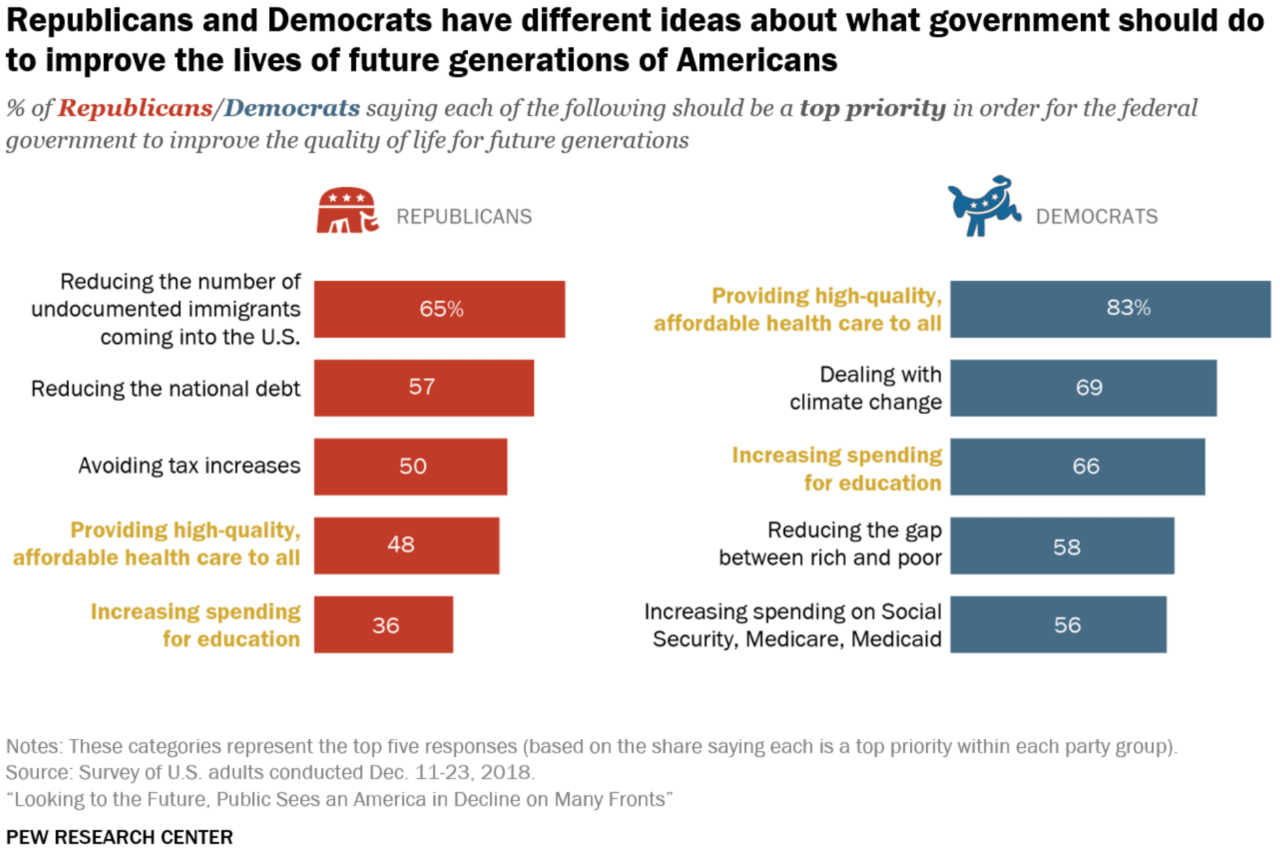The Two Americas Have Grown Much Fiercer
The U.S. was divided 46 years ago. But no one saw it as a fight to the death.
Sometimes you write about the most obvious thing in the world because it is the most important thing. Reaction to the outcome of Robert Mueller’s investigation shows Americans again how divided we are. If you are more or less of the left, you experienced the probe as a search for truth that would restore the previous world of politics. Instead the traitor got away with it and you feel destabilized, deflated. If you are of the Trumpian right, it was from the beginning an attempted coup, the establishment using everything it had to remove a force it could not defeat at the polls. You are energized, elated.
Now both sides will settle down, with the left as forthcoming in its defeat as the right is forbearing in its victory. I just wanted to show you my fantasy life. The Trump forces will strike with a great pent-up anger, and the left will never let go.
Both sides will be intensely human. And inhuman. Because the past few years the character of our political divisions has changed, and this must be noted again. People are proud of their bitterness now. Old America used to accept our splits as part of the price of being us—numerous, varied, ornery. Current America, with its moderating institutions (churches) going down and its dividing institutions (the internet) rising, sees our polarization not as something to be healed but a reason for being, something to get up for. There’s a finality to it, a war-to-the-death quality.
Subgroup Differences in Trump Approval Mostly Party-Based
STORY HIGHLIGHTS
- Party alone can correctly predict Trump approval 81% of the time
- Additional demographics improve predictions only slightly
- Effects of race are apparent among Republicans, independents
WASHINGTON, D.C. — It is well-established that President Donald Trump’s ratings are the most politically polarized Gallup has measured for a president. Trump’s support also has shown consistent differences by gender and by race and education, among other characteristics. What has been less clear is whether those subgroup differences mainly reflect the party leanings of those groups or if they demonstrate an appeal Trump has to certain groups that transcends partisanship.
A new Gallup analysis of 2019 Trump job approval data indicates that subgroup differences largely originate in the party orientation of those groups. Once party is taken into account, there is little to no variation among demographic or attitudinal subgroups. To the extent subgroup differences exist, they are more apparent among independents than among Republicans or Democrats.
The analysis uses statistical models to predict whether a respondent approves or disapproves of Trump. A baseline prediction of 58% correct is used to evaluate the effectiveness of various alternative models. The 58% figure corresponds to how often a model would be correct in predicting Trump job approval not taking into account anyprior information about respondents. Instead, the baseline model merely predicts the most common response (disapproval) for every respondent.
A second model including only a measure of respondents’ party identification as Republican, Democrat or independent correctly predicts 81% of respondents’ opinions of Trump. In other words, by just knowing a person’s partisanship, one achieves a substantial increase in accuracy of more than 20 percentage points over the baseline model.
A third model — which includes party identification but also other respondent characteristics such as political ideology, age, race, gender, education, region, marital status, income and urban/suburban/rural residence — can provide insight into how much factors beyond party predict Trump job approval. This model only improves prediction accuracy by five percentage points over the party-only model, correctly predicting 86% of opinions. In other words, after the effects of party are taken into account, few other characteristics have an independent effect on opinions of Trump.
Immigration, debt, taxes top issues for Republicans…
Ending illegal immigration to the United States is the top priority for Republican voters in terms of increasing the American quality of life, a new survey finds.
In the latest comprehensive survey conducted by Pew Research Center, about 65 percent of GOP voters said the highest priority of the Republican Party should be ending illegal immigration and reducing the illegal alien population currently living in the U.S.
Mass illegal and unchecked immigration to the country has stagnated U.S. wages for decades while redistributing the wealth of America’s working and middle class to higher income earners.
The Pew Research survey reveals Republican voters, by a majority, view illegal immigration as a burden to their quality of life that will impact future generations.
